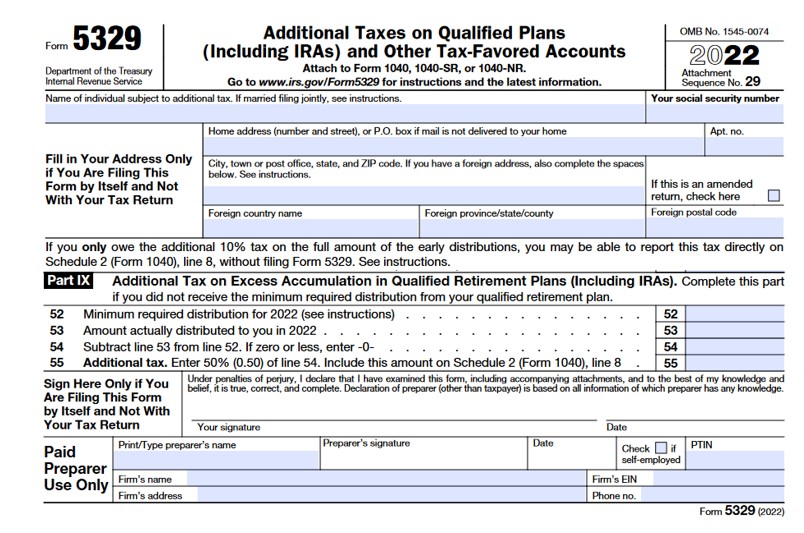Understanding the New RMD Rules for Non-Spousal Beneficiaries of Inherited IRAs - Part III

This is the third of a series of FEDZONE columns discussing the changes to the required minimum distribution (RMD) rules for non-spousal beneficiaries of inherited IRAs. This column discusses two topics:
- (1) Annual RMD requirements applicable to inherited Roth IRAs; and
- (2) Consequences of a beneficiary’s failure to take an annual RMD applicable to some beneficiaries subject to the 10-year rule.
Annual RMD Requirements Applicable to Inherited Roth IRAs
Learn more about your benefits and retirement planning at our No-Cost webinars, featuring Ed Zurndorfer -
Non-Eligible Designated Beneficiaries (NEDBs) of traditional IRAs (who are subject to the 10-year rule; that is, they must withdraw the entire amount of their inherited IRA by December 31 of the 10th year following the year of death of the IRA owner) must take RMDs in years 1 through 9 when the traditional IRA owner dies after his or her Required Beginning Date (RBD). See the table below for what the RBD is depending on the deceased IRA owner’s date of birth.
| IRA Owner’s Date of Birth | Applicable Age | Required Beginning Date (RBD) |
| Before July 1, 1949 | 70.5 | Has already passed. |
| July 1, 1949 – December 31, 1950 | 72 | Has already passed. |
| January 1, 1951 – December 31, 1959 | 73 | April 1 following the year the traditional IRA owner becomes age 73. |
| After December 31, 1959 | 75 | April 1 following the year the traditional IRA owner becomes age 75. |
But mandatory RMDs during years 1 through 9 for NEDBs is not the case for NEDBs of Roth IRAs. NEDBs of Roth IRAs must still withdraw all inherited Roth IRA funds no later than December 31 of the 10th year following the year of death of the Roth IRA owner. Since there are no RMDs during years 1 through 9 of the 10-year period, this allows the inherited Roth IRA funds to accumulate tax-free for the full 10-year term before the account must be emptied.
There still remains confusion around the issue when an Eligible Designated Beneficiary (EDB) (such as a surviving spouse or any individual no more than 10 years younger than the Roth IRA owner at the time of death) inherits a Roth IRA. EDBs are permitted to use their own single life expectancy to leverage the full lifetime “stretch” of an inherited Roth IRA.
A surviving spouse can elect to rollover the inherited Roth IRA into his or her own Roth IRA and therefore there would be no mandatory distributions. If an EDB inherits a Roth IRA, then he or she can choose either the 10-year payout period (the inherited Roth IRA must be completely distributed by December 31 of the 10th year following the year of death of the Roth IRA owner) or the lifetime “stretch”. The “stretch” means taking annual tax-free distributions over their lifetime with the annual distributions calculated using the EDB’s life expectancy. In short, while there would be no RMDs from an inherited Roth IRA within the 10-year period, there would be mandatory annual tax-free distributions from the inherited Roth IRA if an EDB elects the lifetime “stretch” of an inherited Roth IRA. The 10-year mandatory payout applies only if an EDB chooses a 10-year period to withdraw the inherited Roth IRA. The following two examples illustrate:
Example 1. Julie, age 83, died March 3, 2023. At the time of her death, Julie owned a Roth IRA that was valued at $200,000. Julie had named her sister Rose, age 80 when Julie died, as the beneficiary of her Roth IRA. Rose elects not to “stretch” her inherited Roth IRA. She must withdraw the entire Roth IRA no later than December 31, 2034, which is the December 31st of the 10th year following the year of Julie’s death.
Note that Rose can withdraw the entire inherited Roth IRA balance anytime during the 10-year period. For example, if Rose incurs some major expenses within the 10-year period (for example, she has to go into nursing home) she can withdraw the entire inherited Roth IRA account, federal and state income tax-free.
Example 2. James, age 62, died suddenly on February 10, 2023. At the time of his death, James owned a Roth IRA worth $360,000. His designated beneficiary of his Roth IRA is his sister Charlotte, age 57. Since Charlotte has no immediate need for the inherited Roth IRA funds, Charlotte elects to “stretch” her inherited Roth IRA distribution over her life expectancy. She can do this because she is an EDB. Charlotte’s first inherited income tax-free Roth IRA distribution must be made no later than December 31, 2024. Charlotte uses the IRS’ Single Life Expectancy Table and the inherited Roth IRA balance as of December 31st of the previous year to calculate the current year distribution. For example, for the year 2024, the distribution is equal to:
(Inherited Roth IRA Balance as of 12/31/2023)/28.9*
*Life expectancy factor for a 58-year-old individual (obtained from the IRS Single Life Expectancy Table in IRS Publication 590-B) which will be Charlotte’s age in 2024. She was age 57 when James died in 2023.
Consequences of Missing an Annual RMD During the 10-Year Period
In a previous FEDZONE column, it was explained that individuals who are the beneficiaries of a traditional IRA and who are not “eligible designated beneficiaries” are subject to the 10-year withdrawal rule. These individuals are called non-Eligible Designated Beneficiaries or NEDBs. Furthermore, if the deceased traditional IRA owner had reached his or her required beginning date (RBD), then the NEDB has to take annual RMDs during the 10-year period. The question becomes: What happens if a NEDB misses an RMD during the 10-year period?
If a NEDB who is subject to the 10-year withdrawal rule and who must take RMDs during years 1 through 9 misses an RMD, then starting in 2023 and in future years there will be a 25 percent IRS penalty. This missed penalty is reduced to 10 percent if the error is corrected withing two years of the year of the missed RMD. To avoid the penalty altogether, a NEDB should first take the RMD and subsequently request a waiver of penalty by filing IRS Form 5329 (Additional Taxes on Qualified Plans Including IRAs and Other Tax-Favored Accounts) Part IX. This question of a missed RMD is addressed in the IRS’ Retirement Plan and IRA Required Minimum Distribution FAQs, dated March 2023. Specifically, the question:
“Can the penalty for not taking the full inherited IRA RMD be waived?”
The IRS response: “Yes, the penalty may be waived if the account owner establishes that the shortfall in distributions was due to a reasonable error and that reasonable steps are being taken to remedy the shortfall. In order to qualify for this relief, the individual subject to the penalty must file IRS Form 5329 Part IX and attach a letter of explanation.” A portion of the 2022 IRS Form 5329 and Part IX is presented here:

Those beneficiaries who inherited traditional IRAs prior to 2020 and EDBs using the “full stretch” do not benefit from the IRS relief explained in IRS Notice 2022-52. If these inherited IRA beneficiaries missed RMDs during 2021 and/or 2022, then they will be subject to the IRS’ 25 percent penalty unless they withdraw the missed RMDs now and request a penalty waiver by filling out and submitting IRS Form 5329.
Edward A. Zurndorfer is a CERTIFIED FINANCIAL PLANNER™ professional, Chartered Life Underwriter, Chartered Financial Consultant, Chartered Federal Employee Benefits Consultant, Certified Employees Benefits Specialist and IRS Enrolled Agent in Silver Spring, MD. Tax planning, Federal employee benefits, retirement and insurance consulting services offered through EZ Accounting and Financial Services, and EZ Federal Benefits Seminars, located at 833 Bromley Street - Suite A, Silver Spring, MD 20902-3019 and telephone number 301-681-1652. Raymond James is not affiliated with and does not endorse the opinions or services of Edward A. Zurndorfer or EZ Accounting and Financial Services. The information has been obtained from sources considered to be reliable, but we do not guarantee that the foregoing material is accurate or complete. While we are familiar with the tax provisions of the issues presented herein, as Financial Advisors of RJFS, we are not qualified to render advice on tax or legal matters. You should discuss tax or legal matters with the appropriate professional.




